This article is part of our insurance innovators interview series.
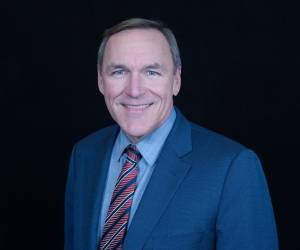 Stanley A. Galanski, President and CEO, The Navigators Group, Inc.
Stanley A. Galanski, President and CEO, The Navigators Group, Inc. Mark E. Watson III, President and Chief Executive Officer, Argo Group International Holdings, Ltd.
Mark E. Watson III, President and Chief Executive Officer, Argo Group International Holdings, Ltd. Kevin H. Kelley, Chief Executive Officer, Ironshore Inc.
Kevin H. Kelley, Chief Executive Officer, Ironshore Inc. John Wurzler, President, OneBeacon Technology Insurance
John Wurzler, President, OneBeacon Technology Insurance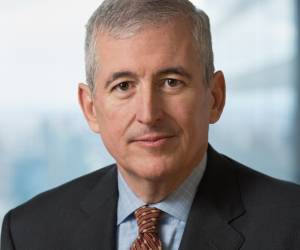 Alan B. Colberg, President and Chief Executive Officer, Assurant, Inc.
Alan B. Colberg, President and Chief Executive Officer, Assurant, Inc. Manny Rios, President and CEO, American Modern Insurance Group
Manny Rios, President and CEO, American Modern Insurance Group Dave Pratt, General Manager, Usage-Based Insurance, Progressive
Dave Pratt, General Manager, Usage-Based Insurance, Progressive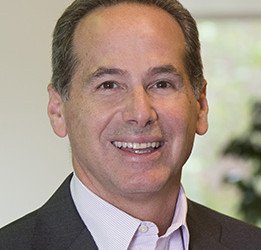 Berto Sciolla, EVP and Manager of North American Treaty Reinsurance,Gen Re
Berto Sciolla, EVP and Manager of North American Treaty Reinsurance,Gen Re Greg Hendrick, Chief Executive, Insurance, XL Catlin
Greg Hendrick, Chief Executive, Insurance, XL Catlin Anand Rao, Principal, PwC U.S. Advisory Practice
Anand Rao, Principal, PwC U.S. Advisory Practice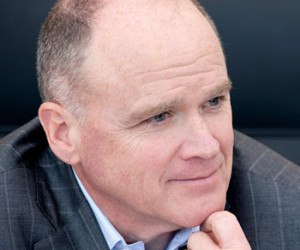 Mike McGavick, Chief Executive Officer, XL Catlin
Mike McGavick, Chief Executive Officer, XL Catlin David M. Lightfoot, Managing Director, Head of GC Analytics – Americas, Guy Carpenter
David M. Lightfoot, Managing Director, Head of GC Analytics – Americas, Guy Carpenter Conan Ward, Chief Executive Officer, Hamilton USA
Conan Ward, Chief Executive Officer, Hamilton USA Ming Lee, Chief Executive Officer, AIR Worldwide
Ming Lee, Chief Executive Officer, AIR Worldwide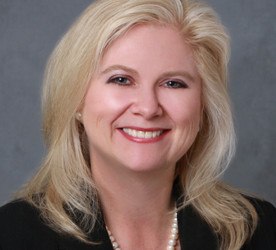 Laura Hay, National Insurance Sector Leader, KPMG LLP
Laura Hay, National Insurance Sector Leader, KPMG LLP John Lupica, Vice Chairman, ACE Group; Chairman, Insurance–North America
John Lupica, Vice Chairman, ACE Group; Chairman, Insurance–North America
 David M. Lightfoot, Managing Director, Head of GC Analytics–Americas, Guy Carpenter
David M. Lightfoot, Managing Director, Head of GC Analytics–Americas, Guy CarpenterQ1: In your view, what has been the greatest innovation in the P/C insurance industry in recent years? Explain.
Lightfoot (Guy Carpenter): The greatest innovation has come from the ability to better understand catastrophe risk and turn that enhanced understanding into risk and capital management strategies that management feels confident in deploying.
Q2: Describe the greatest innovation at your company during your tenure. (It could be a product, process or service.) How did it come about? (Feel free to describe more than one.)
Lightfoot (Guy Carpenter): I’ve been at Guy Carpenter for over 15 years, so I have seen quite a bit of innovation. One of our greatest innovations was and continues to be MetaRisk. It was the first broadly used dynamic financial analysis tool in the industry and brought actuarial science methodology to reinsurance pricing optimization and then to capital management. Since its initial release over 20 years ago, it has created a fundamental shift in companies’ understanding of risk and enabled them to use that understanding to drive better business decisions.
A more recent example of an innovative initiative strongly resonating with our clients is our Model Suitability Analysis (MSA) initiative. MSA is a rigorous and transparent catastrophe model evaluation framework, providing our clients with increased confidence in the catastrophe model results.
Q3: In your view, what innovation or innovator outside the insurance industry has had or is having the greatest impact on the P/C insurance industry?
Lightfoot (Guy Carpenter): I see the most influential innovations from outside the insurance industry as the increase in computing power and the decrease in the cost of storing data. Those two things, along with new sources of data, are driving innovation.
For example, we recently developed GC ForCas, a model for achieving a better understanding of potential losses from casualty catastrophes. We worked with a vendor that had access to best-in-class event loss data, and they were able to categorize the loss data on a multidimensional, correlated basis to inform our model development efforts. (Editor’s Note: Guy Carpenter’s GC ForCas vendor partner is Advisen.)
Q4: Describe one or more ways in which your company encourages innovation. (Feel free to describe any elements of the culture or process.)
Lightfoot (Guy Carpenter): Guy Carpenter recognizes we must be able to provide a high level of value to our clients to achieve our business goals. We have a deliberate process to prioritize areas for innovation, but we’ve often found the best ideas come when we challenge ourselves to answer complicated questions from clients. Our culture is dedicated to focusing on client needs, and the work we do to meet those needs inspires our most innovative solutions.
Q5: What is the biggest obstacle to innovation within the insurance industry? Explain. What is your company doing (or what can the industry do) to overcome this obstacle?
Lightfoot (Guy Carpenter): One potential obstacle is taking on expensive, longer-term projects that are outside a company’s comfort zone. While it’s important to have a clear view of how innovation fits with the company’s long-term strategy, in my view it’s equally important to break the work into smaller pieces so the company can see the value and recognize benefits in a shorter time frame while still working toward the longer goal.
Q6: Do you believe the next innovation to impact the P/C insurance industry will come from inside the industry or from an external innovator? Why?
Lightfoot (Guy Carpenter): I think the next innovation will come from both, as innovation in the insurance industry is often complementary to what’s happening in the commercial sector. As an example, what innovative products or evaluation of risk will grow out of driverless cars? How will the insurance industry respond? Will it fundamentally change types of coverage or pricing, or create product innovations? In my view, responding to these types of challenges helps make the (re)insurance industry an interesting place in which to work.
Q7: Describe your role in leading innovation at your company.
Lightfoot (Guy Carpenter): I’m fortunate to lead GC Analytics for the U.S., Canada and Latin America at a time when expectations are high to deliver best-in-class analytics to our clients. Consequently, I spend a lot of time talking to our broking, analytics and specialty practice colleagues, as well as our clients, about how to increase the value we provide. I recently heard the term “balanced excellence,” and I think this phrase accurately describes what we are striving to achieve.
Q8: What is the best book you have read about innovation? The best course or seminar you have attended? What was a key takeaway from the book or education session?
Lightfoot (Guy Carpenter): The best book having to do with innovation I’ve read recently was a book on statistics—”The Signal and the Noise” by Nate Silver. He is the person who accurately predicted the 2012 U.S. presidential vote outcome in all 50 states. His book provided interesting examples of not only how important the quality of the data is when you are designing models but also the quality of the model developers’ assumptions.
Another key takeaway from the book is how critically evaluating multiple models (of the same thing) helps the user not only derive a better prediction but also have more confidence in the result, which often leads to a better decision-making process.
Q9: It is often said that tolerance for failure is one of the key cultural elements of a company in which innovation can thrive. Describe a failed initiative at your company and what you learned about innovation in the process.
David Lightfoot, Guy Carpenter
Lightfoot (Guy Carpenter): Tolerance for failure is clearly important to innovation. What you learn from a failed experiment is often more important than what you derive from one that works. As an example, several years ago we built a model to evaluate the “riskiness” of portfolios subject to casualty-based catastrophe losses. We categorized portfolios as high, medium or low riskiness relative to other portfolios. However, this information didn’t resonate with our client base, as it was hard for our clients to develop risk management strategies on the riskiness level. They needed a quantification of the risk. As a result, in our GC ForCas model, we made sure that the model provides a credible estimation of potential loss from casualty catastrophes.
Q10: Have you ever collaborated with market competitors to move an innovation forward? If so, why did collaboration make sense in this situation?
Lightfoot (Guy Carpenter): Yes, we’ve been working with competitors to support Oasis, a not-for-profit initiative based in London creating a platform to lower the cost and complexity of catastrophe model development. We believe it will provide more credible views of cat risk to the industry.
Q11: Outside of providing risk transfer solutions, what are the most likely areas in which insurers can be innovators? Can P/C insurers disrupt other industries or provide noninsurance solutions by applying innovations developed through their core skills in underwriting and risk analysis, settlement negotiations, catastrophe modeling, environmental science or other areas?
Lightfoot (Guy Carpenter): There is a fundamental link between risk and capital, and quantifying that risk to inform how capital is deployed also applies to other industries. What’s been innovative in reinsurance—looking at portfolios and using actuarial and natural sciences to develop risk metrics—can be applied on a smaller basis, or even to a single risk. The reinsurance industry has produced a tremendous amount of innovation in risk management, and that work is relevant to all insurance companies, as well as companies in other commercial industries. All management teams want to know more about the risk they face to help them be better stewards of the capital on which their organizations are based.
Read more Innovation Insights by Person:
 Stanley A. Galanski, President and CEO, The Navigators Group, Inc.
Stanley A. Galanski, President and CEO, The Navigators Group, Inc. Mark E. Watson III, President and Chief Executive Officer, Argo Group International Holdings, Ltd.
Mark E. Watson III, President and Chief Executive Officer, Argo Group International Holdings, Ltd. Kevin H. Kelley, Chief Executive Officer, Ironshore Inc.
Kevin H. Kelley, Chief Executive Officer, Ironshore Inc. John Wurzler, President, OneBeacon Technology Insurance
John Wurzler, President, OneBeacon Technology Insurance Alan B. Colberg, President and Chief Executive Officer, Assurant, Inc.
Alan B. Colberg, President and Chief Executive Officer, Assurant, Inc. Manny Rios, President and CEO, American Modern Insurance Group
Manny Rios, President and CEO, American Modern Insurance Group Dave Pratt, General Manager, Usage-Based Insurance, Progressive
Dave Pratt, General Manager, Usage-Based Insurance, Progressive Berto Sciolla, EVP and Manager of North American Treaty Reinsurance,Gen Re
Berto Sciolla, EVP and Manager of North American Treaty Reinsurance,Gen Re Greg Hendrick, Chief Executive, Insurance, XL Catlin
Greg Hendrick, Chief Executive, Insurance, XL Catlin Anand Rao, Principal, PwC U.S. Advisory Practice
Anand Rao, Principal, PwC U.S. Advisory Practice Mike McGavick, Chief Executive Officer, XL Catlin
Mike McGavick, Chief Executive Officer, XL Catlin David M. Lightfoot, Managing Director, Head of GC Analytics – Americas, Guy Carpenter
David M. Lightfoot, Managing Director, Head of GC Analytics – Americas, Guy Carpenter Conan Ward, Chief Executive Officer, Hamilton USA
Conan Ward, Chief Executive Officer, Hamilton USA Ming Lee, Chief Executive Officer, AIR Worldwide
Ming Lee, Chief Executive Officer, AIR Worldwide Laura Hay, National Insurance Sector Leader, KPMG LLP
Laura Hay, National Insurance Sector Leader, KPMG LLP John Lupica, Vice Chairman, ACE Group; Chairman, Insurance–North America
John Lupica, Vice Chairman, ACE Group; Chairman, Insurance–North America
Read other innovator’s response by question:
- Q1: The greatest innovation in the P/C insurance industry
- Q2: Describe the greatest innovation at your company
- Q3: Innovation or innovator outside the insurance industry
- Q4: How your company encourages innovation
- Q5: The biggest obstacle to innovation within the insurance industry?
- Q6: The next innovation to impact the P/C insurance industry
- Q7: Your role in leading innovation.
- Q8: Best book you have read about innovation
- Q9: Describe a failed initiative at your company
- Q10: Collaborating with market competitors
- Q11: Can P/C insurers disrupt other industries?
Get all 16 interview neatly packaged in a single PDF download. Explore ideas by personality and by question. More than 60 pages of content.





















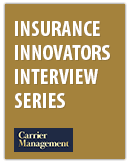
 Is State Farm General a Sinking Ship? California Emergency Rate Request Dropped to 17%
Is State Farm General a Sinking Ship? California Emergency Rate Request Dropped to 17%  USDA Opens 59% of Federal Forest for Logging to Manage Wildfire Risk
USDA Opens 59% of Federal Forest for Logging to Manage Wildfire Risk  Poor Background Music Choices Can Negatively Impact Work Performance
Poor Background Music Choices Can Negatively Impact Work Performance  Tiffany Diamonds Worth $770K Recovered 2 Weeks After Suspect Swallowed Them
Tiffany Diamonds Worth $770K Recovered 2 Weeks After Suspect Swallowed Them 


